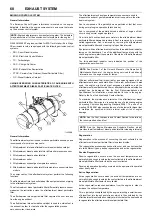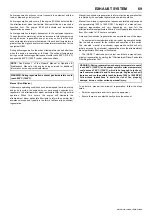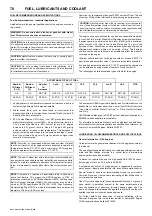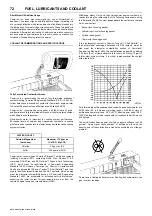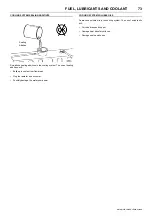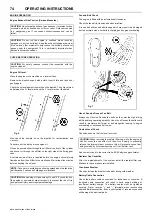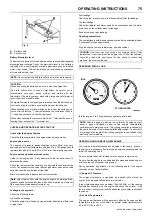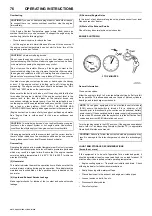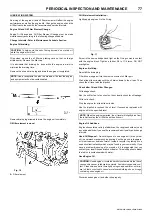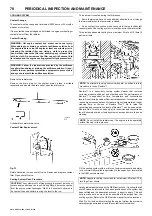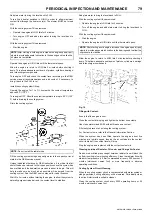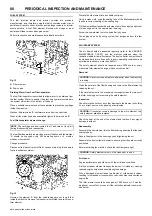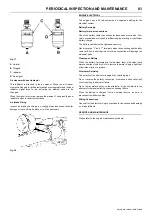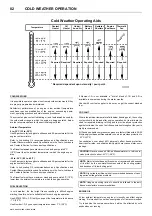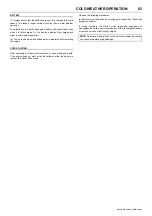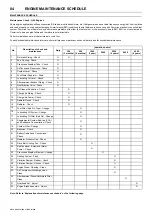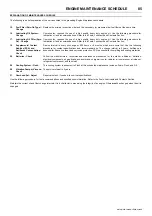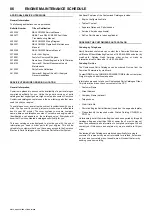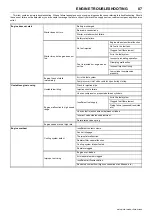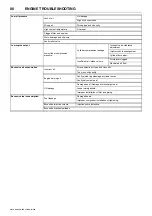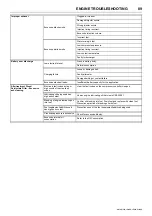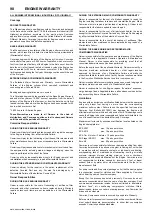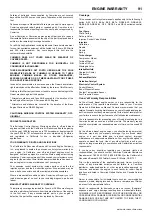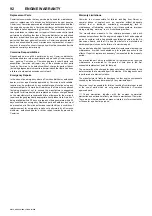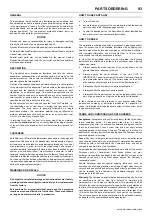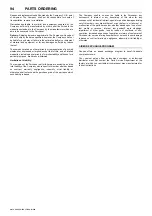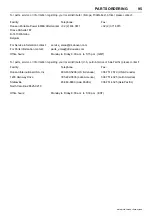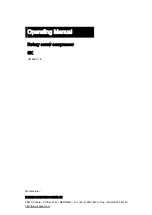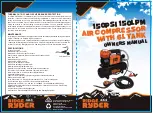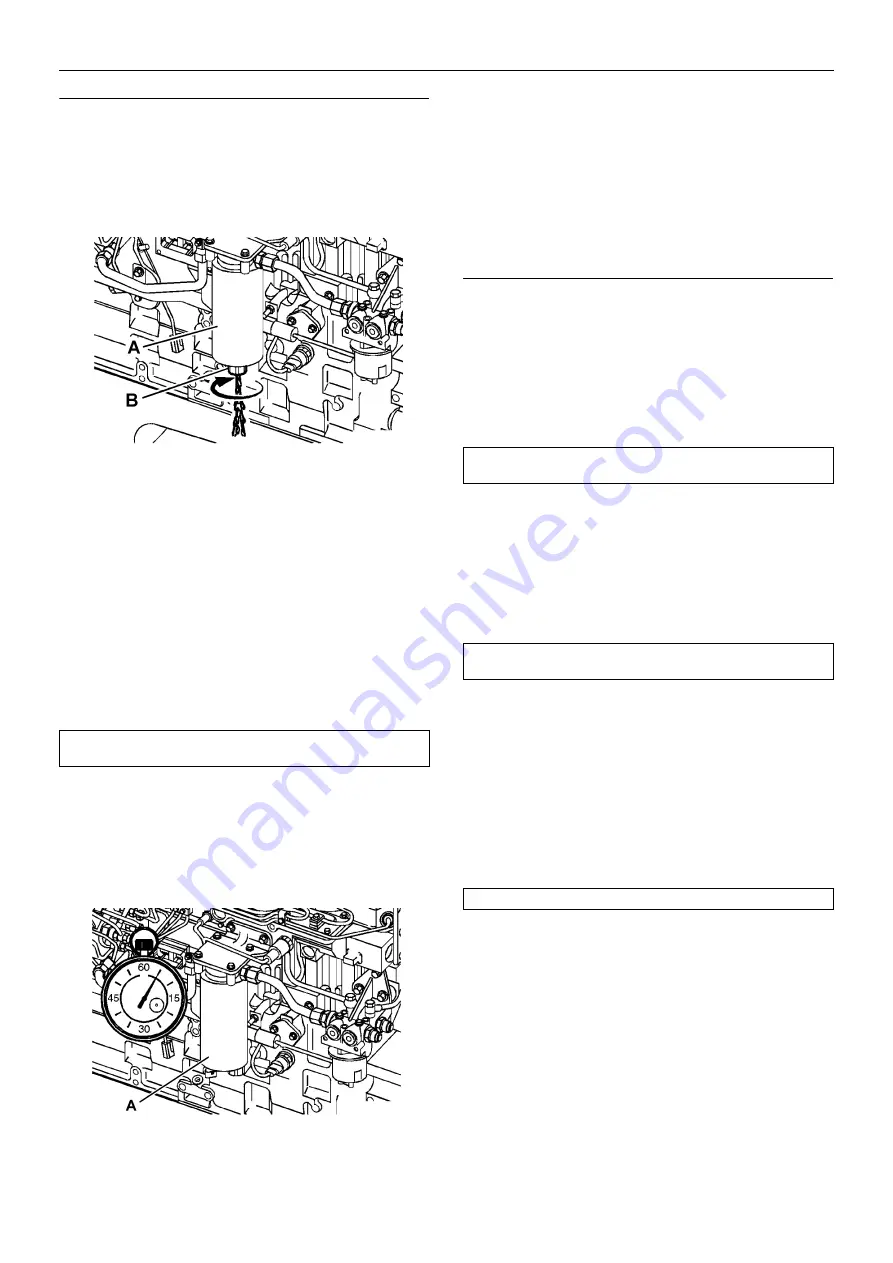
80
PERIODICAL INSPECTION AND MAINTENANCE
9/275, 9/305, 12/250, 17/240, 21/220
FUEL SYSTEM
The fuel injection pump and injector nozzles are precisely
manufactured, and therefore, using fuel which contains water or dust
particles will result in either injection pump plunger seizure or injector
nozzle seizure. A fuel filter element blocked with sludge or dust
particles will lead to reduced engine output.
Perform inspection and maintenance periodically as follows:
Fig. 15
A
Filter element
B
Drain valve
Draining Water from Fuel Filter/separator.
The fuel filter/separator is provided to allow water to be drained from
the fuel system. Water is heavier than fuel so any water contained in
the system will collect in the bottom of the bowl.
Place a suitable container under the separator to prevent any spillage
inside the machine.
Slacken the drain valve 'B' until water drains from the vent tube.
When all the water has been evacuated, tighten the drain valve 'B'.
Fuel filter/separator element change.
The fuel filter/separator also provides primary filtration and the element
'A' should be changed every 500 operating hours or 6 months,
whichever comes first.
Change procedure:
Disconnect fuel sensor (where fitted). Loosen drain plug B and empty
fuel into suitable container
Fig. 16
Unscrew the element 'A' from the head taking care not to spill fuel
inside the machine. Remove fuel sensor (where fitted) and re-fit to new
filter element.
Discard the old element into a suitable container.
Using a clean cloth, wipe the sealing face of the filter/separator head
to ensure correct seating of the sealing ring.
Fill the element/bowl assembly with clean fuel oil then apply a light coat
of clean engine oil to the new element seal ring.
Screw the new element onto the head firmly by hand.
The engine has a self priming system that purges air from the fuel
system.
AIR INTAKE SYSTEM
The air filter should be inspected regularly (refer to the SERVICE/
MAINTENANCE CHART) and the element replaced when the
restriction indicator lamp illuminates. The dust collector box(es) should
be cleaned daily (more frequently in dusty operating conditions) and
not allowed to become more than half full.
The safety element should be renewed every 2000 hours or every
other main filter element change, whichever comes first.
Removal
Clean the exterior of the filter housing and remove the filter element by
releasing the nut.
If the safety element is to be renewed, thoroughly clean the interior of
the filter housing prior to removing the safety element.
Inspection
Check for cracks, holes or any other damage to the element by holding
it up to a light source, or by passing a lamp inside.
Check the seal at the end of the element and replace if any sign of
damage is evident.
Reassembly
Assemble the new element into the filter housing ensuring that the seal
seats properly.
Secure the element in the housing by hand tightening the nut.
Assemble the dust collector box parts, ensuring that they are correctly
positioned.
Before restarting the machine, check that all clamps are tight.
Air cleaner
Engine performance and life vary with the air intake conditions.
A dirty air cleaner element reduces the amount of intake air, causing
reduced engine output and possible engine damage.
Also, a damaged element leads to abrasion of cylinders and valves,
resulting in increased oil consumption, reduced output and shortened
engine life.
The filter element should be changed at 1000 hours or 12 months,
whichever comes first, or sooner if the restriction indicator shows red.
See below.
NOTE:
The cartridge and bowl contain fuel. Take care not to spill it
during disassembly and reassembly.
CAUTION: Never remove and replace element(s) when the machine
is running.
CAUTION: If inspection reveals damage to the main element, the
safety element must be replaced.
CAUTION: Safety elements must not be cleaned or re-used.



